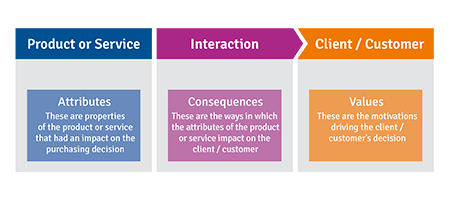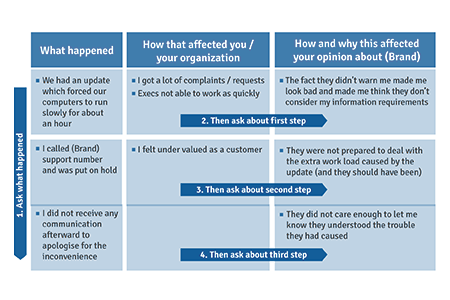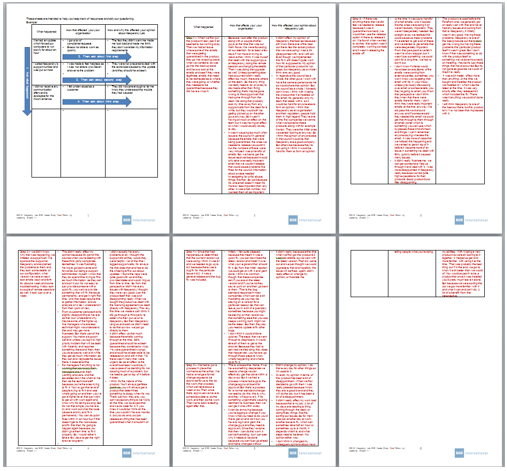Laddering exercises use structured questioning to help respondents to organize and examine their own experiences and feelings.
People are generally quite good at telling you what happened, or what they liked about something, but are often much less able to tell you why and in some cases may not even notice on a conscious level what their underlying motivations and reactions are. Laddering attempts to tease out these sorts of details by asking a series of questions designed to dig deeper into these underlying motivations and emotional reactions than conventional questioning can reach.
















